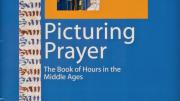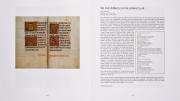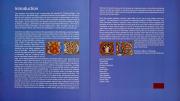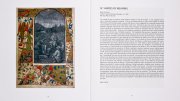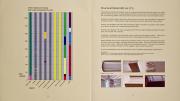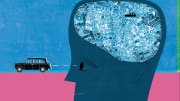The Faculty of Arts and Sciences (FAS) concluded its "Conversations@FAS" for this semester on a snowy April Fools' Day, with a third discussion in a series focused on teaching and learning. Following the initial February 11 panel on activity-based learning and the March 25 session on global perspectives, this gathering, "Teaching with Collections," turned out to be perhaps the liveliest of the three. It featured four professors from diverse disciplines whose research and courses make significant use of Harvard's holdings that range from biological specimens and antique scientific instruments to works of art and American historical objects:
• Peter Galison, Pellegrino University Professor, Senior Fellow of the Society of Fellows, and director of the Collection of Historical Scientific Instruments. Galison works in particular on twentieth-century physics and the interaction among experiments, instrument makers, and theorists, work that has led him to explore filmmaking to tell the story of the hydrogen bomb.
• Jeffrey Hamburger, Franke professor of German art and culture, who specializes in medieval manuscript illumination, among other subjects. He has been a faculty leader in the recent review and reorganization of the University's library system.
• Laurel Thatcher Ulrich, 300th Anniversary University Professor, a Pulitzer Prize-winning historian of Colonial and early American life. Among her current course offerings is History 84c, "Confronting Objects/Interpreting Culture: Interdisciplinary Perspectives on North America." She helped curate the current Tangible Things exhibition on campus, drawn from throughout Harvard's collections, as described in Harvard Magazine's Treasure department. The magazine earlier excerpted a chapter from her book about material history, The Age of Homespun: Objects and Stories in the Creation of an American Myth, and covered her work on the history of women at Harvard.
• Farish Jenkins Jr., professor of biology and curator of vertebrate paleontology in the Museum of Comparative Zoology, where he is Agassiz professor of zoology. Students he has mentored have gone off to collect specimens around the world, including one who gathered venomous snakes in the Congo. With a former student, he made important fossil discoveries in the Arctic relating to the origin of terrestrial vertebrates from fish 375 million years ago; this work was depicted on stage in Cambridge last year.
Harvard College dean Evelynn Hammonds—an historian of science who is also affiliated with the department of African and African American studies—moderated the discussion. Perhaps fittingly, for a conversation about collections, the discussion took place in historic Harvard Hall (the venue for the prior sessions was in Maxwell Dworkin, home to computer science and electrical engineering). Hammonds noted that although Harvard has vast holdings of objects and artifacts, "we've not always made the best use of these collections in our teaching." More than 100 FAS professors do teach with objects, however—she cited courses in the history of art and architecture, history, visual and environmental studies, anthropology, and other fields.
"Waywiser" for Scientific Instruments
Professor Galison recounted a financial and administrative challenge the faculty faced some years ago: instead of running a "mini Smithsonian" of scientific instruments, find a way to use them in teaching. That took some doing—including creating superb display space on the first floor of the Science Center, opened five years ago, and inventorying some 20,000 objects. He cited their range, from the Grand Orrery to the control panel from Harvard's now-dismantled cyclotron. How might the objects be used in education?
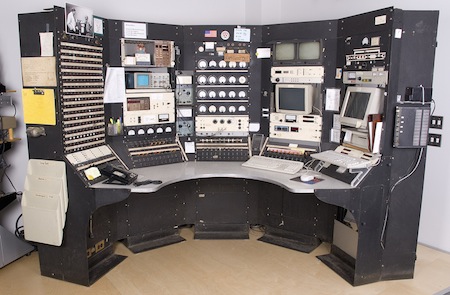
Photograph courtesy of the Collection of Historical Scientific Instruments/Harvard University
Control panel, Harvard Cyclotron
Galison outlined several paths. First, the scientific instruments have become a "laboratory of exhibition," used in various explorations and displays. Second, the collection has spent several hundred thousand dollars to make most of its objects accessible online. The "Waywiser" database system can accommodate subsequent insertion of audio and visual materials concerning the use of the items, new discoveries about them, and more; the system supports making slides for classes, and can be searched by date, type of apparatus, and so on. Third, students themselves now produce exhibitions in their history-of-science course work—Galison cited one display on patent models, for example, and another on "Cold War science" as reflected in public products like children's chemistry sets (a collection that is being augmented, he noted, on eBay).
The two overarching goals, Galison said, are:
• "to make the body of resources used as an input to scholarship…more than just texts"—that is, to make the material objects of science, of whatever vintage, a part of research; and
• to use images, moving images, and other contemporary technologies as "part of the scholarly output"—so that researchers think not only of papers and books, but of exhibitions, videos, and other tools that can engage a wider public in their discoveries and interpretations.
"The Technology of the Codex" and "Thinking through Doing"
Professor Hamburger projected an image of an illuminated manuscript—not, he noted, a cyclotron. His focus, he said, was "the technology of the codex—or as we know it, the book," a subject of rising interest and study, ironically "precisely at the time when they are becoming outdated." Houghton Library, he said, had a collection of 3,500 medieval manuscripts—the largest such holding in any North American research university, much of which is not yet well known or used. The volume he showed, he said, came from a place older than Harvard: the University of Paris. He had found it a compelling teaching tool for students in part because it retains its original twelfth-century binding (a rarity for books of this age), complete with a ruled bookmark with a built-in, numbered wheel so that a reader (or more likely, copyist), could determine precisely where in a column of text he had left off. Letting students work with the volume in Houghton, Hamburger said, "brings this material to life in a way no classroom presentation could ever possibly do."
Among Harvard's other treasures, he noted, are the Law School's more than 10o medieval manuscripts, the Medical School's significant collection—even the Business School's historic collection in Baker Library with its invaluable Medici and Barberini family material, much of it not yet cataloged or digitized.
Hamburger explained how, beyond showing students such books, he had them work with the historical materials, engaging in the craft of books. His freshman seminar, "The Book of Hours: Picturing Prayer in the Middle Ages," produced an exhibition in Houghton, complete with a self-designed and -written catalog: instruction in the making of books. Students in his General Education course, "Openings: The Illuminated Manuscript," can choose either to write a research paper or to make a book: rendering a modern text in medieval form (one student did a Mother Goose, another one on Albert Einstein), or a medieval text in modern form.
Seen broadly, Hamburger said, such exercises represented a change from Harvard's history of "disparaging practice." In his view, students who made a book (and found it much more demanding than writing a paper) were "thinking through doing." The work in such classes was "collaborative as well as creative," and taught practical skills from hands-on work to using Web tools and techniques to present the products of such work.
In his experience, Hamburger said, introducing students to "the aura of the object"—a medieval manuscript, a pottery shard—“invariably works": it brings the past alive, it engages students in a sense of immediacy, and it challenges them because such encounters "force students to come to terms with the intractability of the object." That is, they learn simultaneously how compelling an object is, and how difficult it can be to make it "speak." (Hamburger recalled a course he once taught at Oberlin, where students were taken through an art museum in which all the labels had been obscured, and asked to identify the works—a task he said would test even an expert.)
That interaction, he said, "can help instill real research habits early on." On the other hand, it is time-consuming, expensive work for faculty members to identify, obtain permission to use, and prepare to teach from the objects—in collaboration with curators and other support staff. The considerable gains from working with such materials, it must be remembered, come at a considerable cost.
A Mary Poppins Moment
Professor Ulrich subsequently broadened Hamburger's argument by summarizing the evolution and use of the Tangible Things exhibition (on display at the Science Center space through May 29): in later discussion, she noted that the exhibition has arisen from a graduate seminar in General Education, where advanced students helped shape the subsequent undergraduate course ("Tangible Things: Harvard Collections in World History," new this semester) and an undergraduate research seminar produced interpretive materials for the exhibition proper. The current challenge, she said, is using the exhibition to teach the new General Education course, with its unexpected enrollment of 250.
Her own interest in material culture and history, Ulrich recalled, arose from her work in early American social history. She became interested in finding out how to use objects—a chair, items of clothing, even a toothbrush could qualify and tell a story, she said—“as primary sources to study ordinary people and ordinary lives." Harvard, an elite institution, has neither collected such objects nor studied them extensively, she reported.
In a Mary Poppins moment, she pulled a pillowcase out of her large bag and extracted from it a "ratty, nondescript" 1920s quilt, with a hexagonal motif, that she had used as the basis of a freshman seminar. How could it be studied and understood? From the Sackler Museum, Ulrich said, she and her students learned about Islamic design with hexagons, embodied in 1500s Turkish tiles, and traced their migration to western Europe, and then into eighteenth-century and later American patchwork quilts. From the Baker Library collections, she and the students extracted Lewis Hine photographs of textile mills (the quilt, hand-sewn, used industrial materials), and from there explored back into American agriculture, cotton, and slavery.
Throughout, Ulrich said, encounters with "objects break us out of our narrowness," revealing connections of historical consequence among seemingly unconnected things. A Central Plains Lakota or Cheyenne dress from the Peabody collections, dated 1800-1825, contains not only local animal materials but also British brass buttons and cowrie shells from the Indian Ocean: vivid evidence of trade and commerce in the middle of the continent even before Lewis and Clark explored it. She concluded, "Students get terribly excited when you put them in touch with real stuff."
How to Eat an Egg Bigger than Your Head
Some of those excitements, Professor Jenkins said, might prove a little too exciting for the audience, as he proceeded to project slides of enormous snakes—and students handling some of their young—to illustrate his point that in organismic and evolutionary biology, "You can't teach many courses without specimens."
The Museum of Comparative Zoology (MCZ) collections—he projected dazzling drawers of butterflies and of snail shells—are the foundation for teaching about such basic concepts as diversity and species and population variation. An exhibition of horns and antlers—lovely objects for any visitor to behold—is significant for understanding species behavior and life history.
Turning to snakes, he showed the skeleton of a young boa constrictor, important for conveying concepts of anatomy, behavior, and ecology. For all the amazing array of vertebrae and ribs revealed in the slide, Jenkins emphasized other points. Snakes have radiated widely (everywhere but Earth's poles), range in size from minuscule to gigantic (witness a 30-foot anaconda skin), and eat everything from snails to enormous vertebrates like tapir, deer, and pigs.
That last point was his object: the important thing about a snake's anatomy is not the vertebra and ribs, but the comparatively small skull, for the astonishing truth is that many snakes swallow food objects four to five times the size of their heads. He showed a snake swallowing a frog, and then an astonishing series of photos and x-rays of a snake coiling around and ingesting an egg: opening its hinged jaws remarkably wide, engulfing the "prey," and then, decisively, using specially evolved prongs on its vertebrae to crush the egg (enabling the snake to absorb the contents, after which it regurgitates the shell).
Pedagogically, he said, exposure to preserved and living specimens was aimed at "trying to make you [i.e., students] love snakes" so they could, and would want to, study their evolution and structure. To do the science, students have to "look at, feel, touch, understand, and know every class of animals"—a point made emphatic by his final slide, of an undergraduate, then a freshman, handling a live snake.
Enabling Collection-Based Teaching
In the ensuing discussion, Faculty of Arts and Sciences dean Michael D. Smith asked the panelists what could make such experiences better for students, and easier for faculty members to bring to the classroom—a refreshing change, for the dean, from the financial concerns and cost-cutting measures that necessarily engaged so much of the administration's attention from 2008 through mid 2010.
Galison said that he observed a need to coordinate software platforms and technological infrastructure for the collections (much like the effort to improve operations within the University's library system). Currently, he said, museums and other collections are proceeding separately—in ways that are not always compatible or cost-effective. He also said that, allowing for collection safety and security, Harvard needed a simplified process for sharing objects among their parent institutions and repositories within the University. As for physical resources, he saw a need for classrooms equipped with better instructional technology, and, especially, enhanced and more numerous student workspaces—for instance, film-editing studios, where Harvard, he maintained, is far behind the curve.
Ulrich added that the museums have very few classrooms and teaching spaces. The Fogg Art Museum renovation will remedy this problem for the principal art holdings, when it opens in 2013, but the Peabody and other facilities will remain "scrunched" for space. (Jenkins later said that the MCZ is similarly limited—so much so that he sometimes uses his office as the teaching space.)
Ulrich also emphasized the need for adequate curatorial and support staff, as demand for teaching with objects increases. Hamburger underscored that point: when he designs a course, he submits a list of manuscripts he'd like to use in class; a curator then determines whether each can be used, or is too fragile to be handled. In recent years, as the FAS budget has been tightened, those key staff members have been under stress, he said.
Turning to a different issue, Hamburger said it was often difficult to build a class around handling an object—giving each student in turn time to participate—given the standard 50-minute class slot. Somehow, he said, alternate kinds of teaching require scheduling longer classes a day or two each week, so interested students can enroll without conflicts with other courses on the conventional schedule .
Evelynn Hammonds asked whether teaching with objects narrowed the focus of a class. Quite the contrary, said Ulrich, describing herself as a "micro-historian." The object itself often became the hub of a wheel of exploration, with spokes of inquiry radiating out in many directions (as in her earlier example of the quilt). Galison concurred; many fields and courses are already quite specific in focus, and a material object "gives you a location for those inquiries."
Harvard has historically lagged in such studies, he said, because of a "class anxiety that hovered over us for a long time," as if art-making, practice, or working with objects was not suitable for "white-collar learning." To educate the whole person today, he said, students needed opportunities for "head work, hand work, and all that mediating virtual space in between" (by which he meant using digital resources and tools). Given a visual and Web-enabled student body, Galison argued, the static lecture, unaccompanied by visual or other materials, would ultimately become "unintelligible" to students accustomed to using all their perceptions. And in the same way, students had to learn to read, to write, and to speak and present materials well, in all media—a reason for his strong hopes that President Faust's arts initiative would, over time, result in much more art-making on campus.
Jenkins said that "specimen-based learning is always going to be a smaller enterprise here," compared to larger lecture-based instruction. Instruction in biology, for example, required access to suitable, committed laboratory space (where it would not be necessary to set up a special facility for each class meeting) in which preserved or live specimens could be made accessible, used, and then returned to their proper permanent repositories.
Hamburger noted a farther-reaching challenge. Objects from the past are intractable: students might not have the ancient-language skills required to read and interpret old texts, for instance. Teaching them therefore requires a "superstructure" of preparation and support to enable learning to begin.
Such difficulties identified, there was a strong sense in the room that learning from the collections was well and widely established in FAS, that the practice crossed many disciplines, and that with sufficient support and appropriate use of technology, the momentum would accelerate, resulting in livelier classrooms, public exhibitions, online presentations, and other results as yet unimagined.
